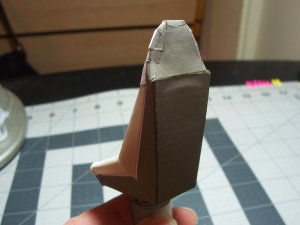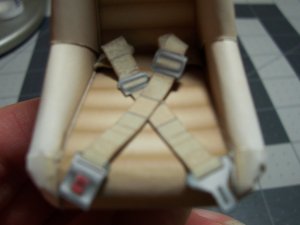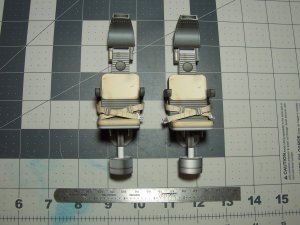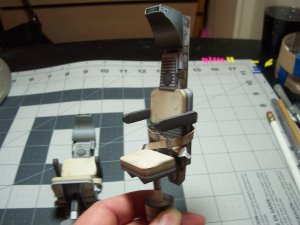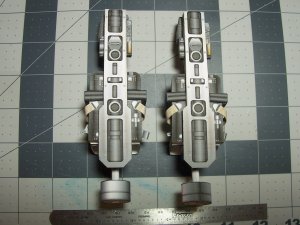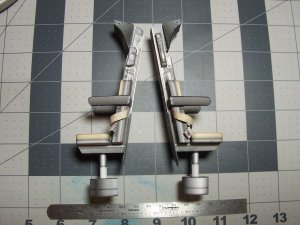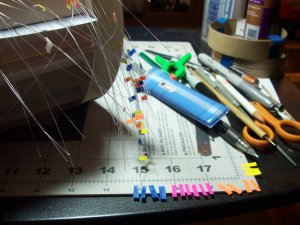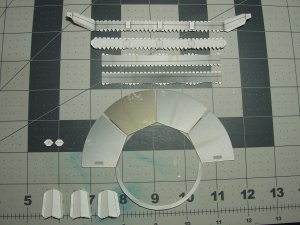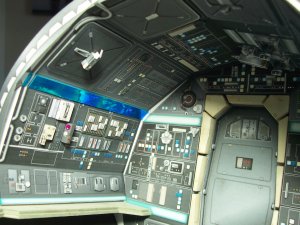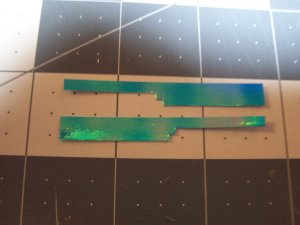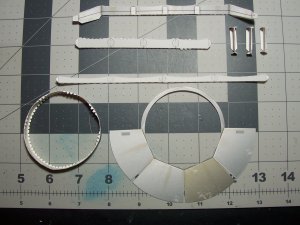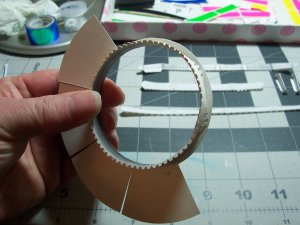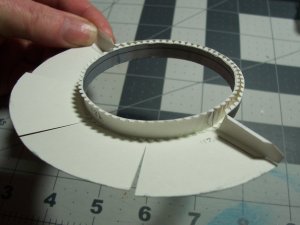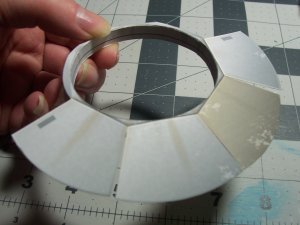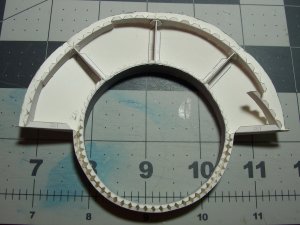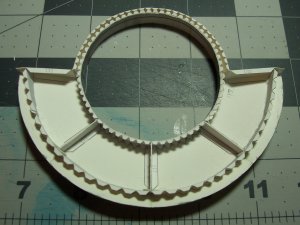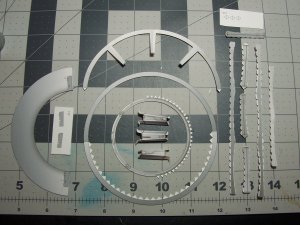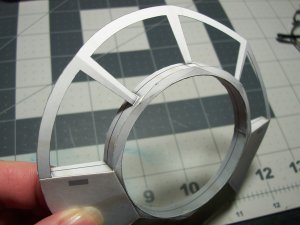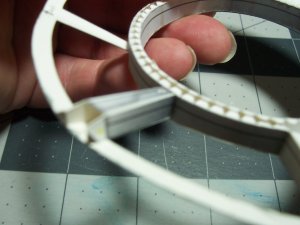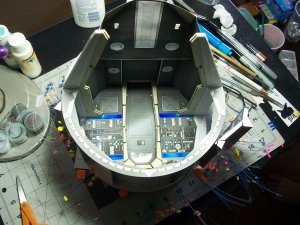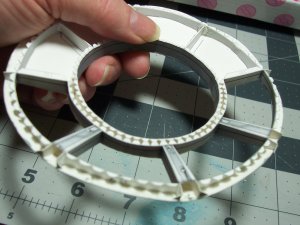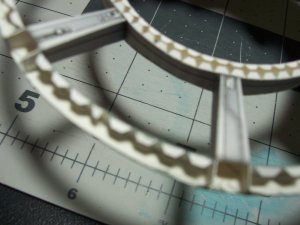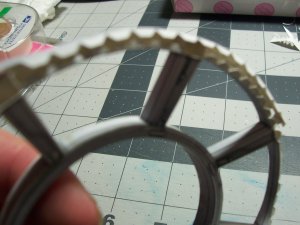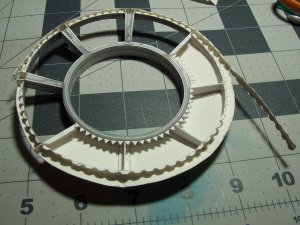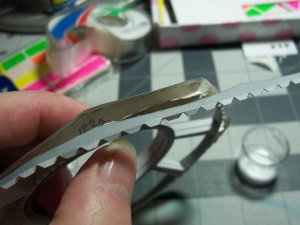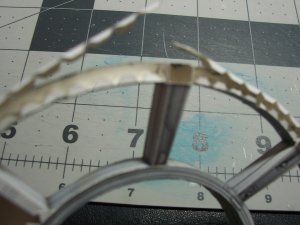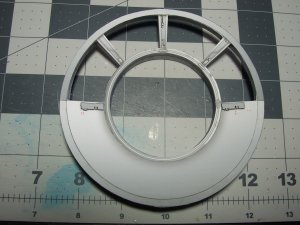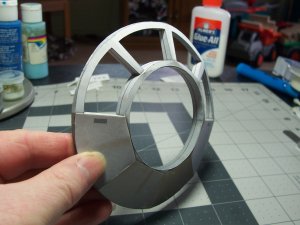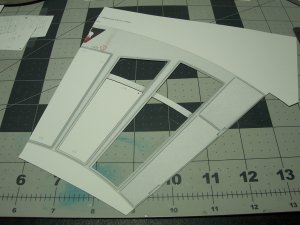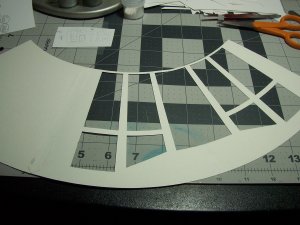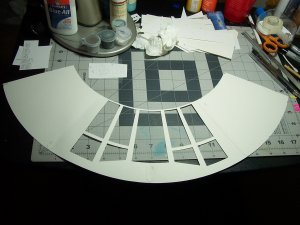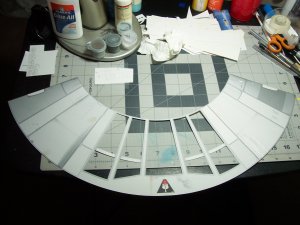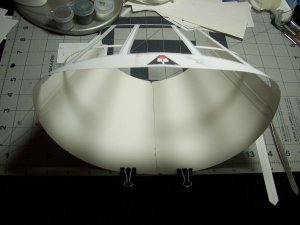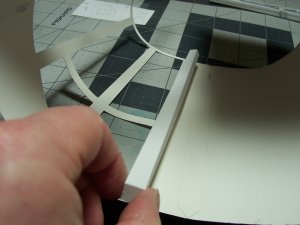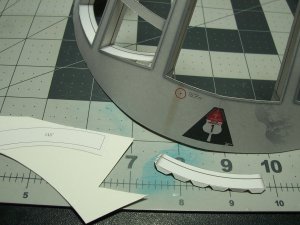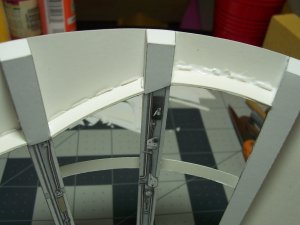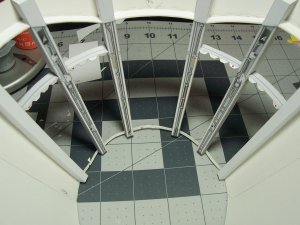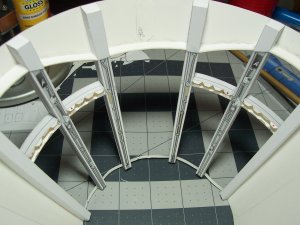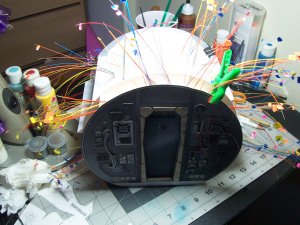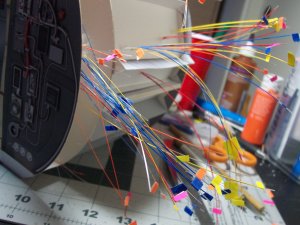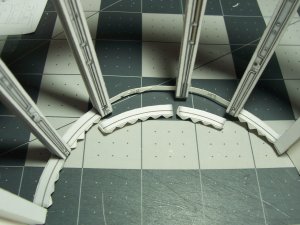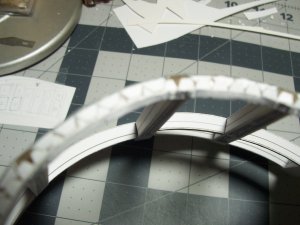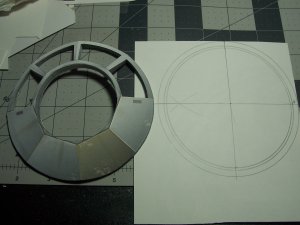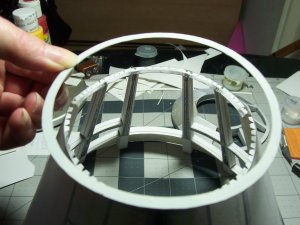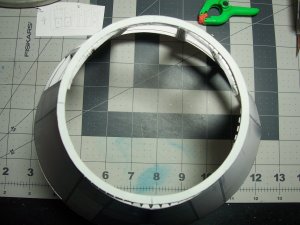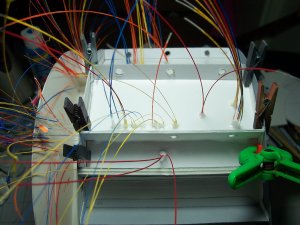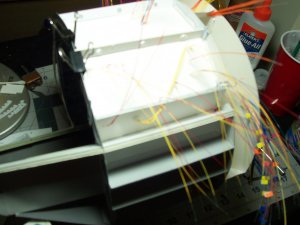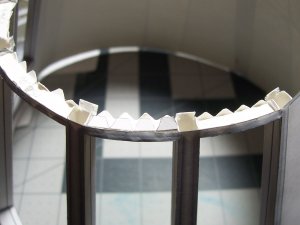I've been busy working on this since April 1019. I had to take a break, but I'm back on it now to the end :fight:
This is the Star Wars Millennium Falcon Cockpit designed by UHU02 that I modified to support additional strength, fiber-optic lighting, cockpit front windows, and updated/modified nose cone fitment required to support the addition of windows. The fiber-optics have taken a lot of work and planning to install. I used approximately 150 feet of fiber of different thicknesses. I followed the original model as far as color and position on the lights.
The model is actually a little smaller than 1/12 scale it seems. The action figures from the Star Wars Black Series from Disney Hasbro are in fact 1/12 scale but these are way too big for the model. The figure of Rey that is used in UHU02's pictures is smaller in size and suits the model well. I wanted to use the original pilots of the M. Falcon in my version but I will have to keep looking for a good fit.
I followed the same sequence for the build as the original from UHU02. The door is shown part way through construction below.
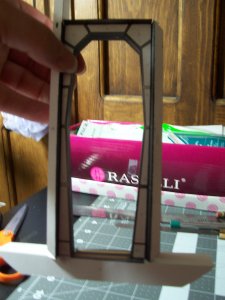
Small door supports/guides are shown below. These are pretty tiny to make.
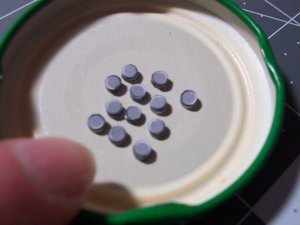
Here are the guides in place. They stop the door from shifting when in the closed position.
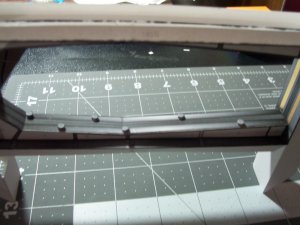
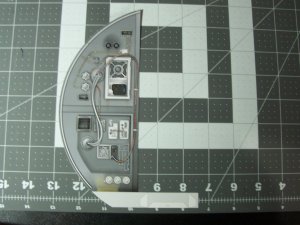
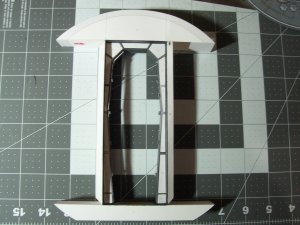
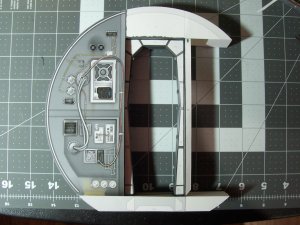
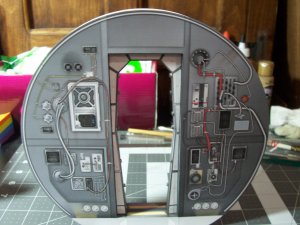
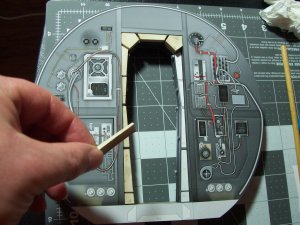
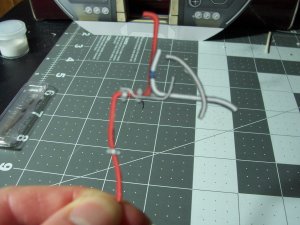
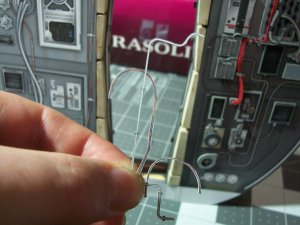
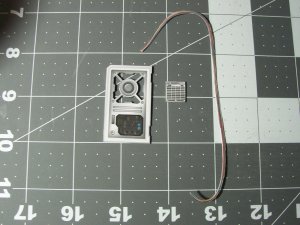
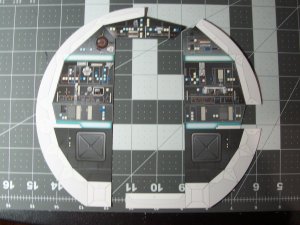
I did have to strengthen the bulkhead as it was way too floppy for what I wanted to do with the lighting. Even with it won't hold it's shape too well as can be seen in the picture below.
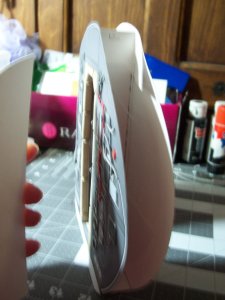
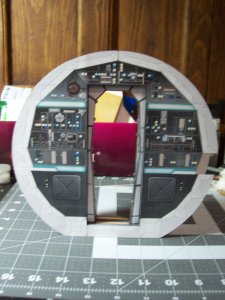
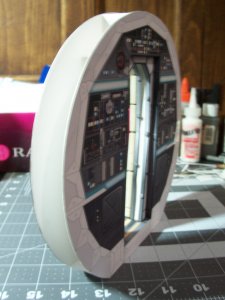
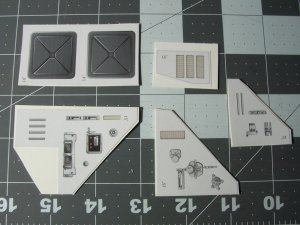
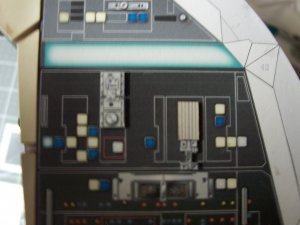
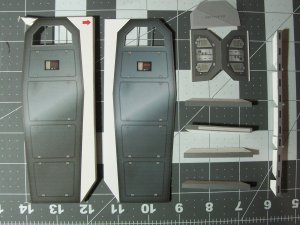
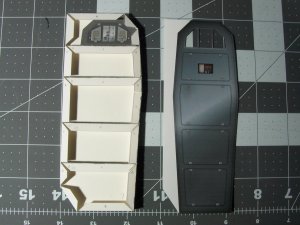
This is the Star Wars Millennium Falcon Cockpit designed by UHU02 that I modified to support additional strength, fiber-optic lighting, cockpit front windows, and updated/modified nose cone fitment required to support the addition of windows. The fiber-optics have taken a lot of work and planning to install. I used approximately 150 feet of fiber of different thicknesses. I followed the original model as far as color and position on the lights.
The model is actually a little smaller than 1/12 scale it seems. The action figures from the Star Wars Black Series from Disney Hasbro are in fact 1/12 scale but these are way too big for the model. The figure of Rey that is used in UHU02's pictures is smaller in size and suits the model well. I wanted to use the original pilots of the M. Falcon in my version but I will have to keep looking for a good fit.
I followed the same sequence for the build as the original from UHU02. The door is shown part way through construction below.

Small door supports/guides are shown below. These are pretty tiny to make.

Here are the guides in place. They stop the door from shifting when in the closed position.










I did have to strengthen the bulkhead as it was way too floppy for what I wanted to do with the lighting. Even with it won't hold it's shape too well as can be seen in the picture below.









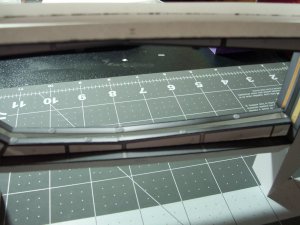
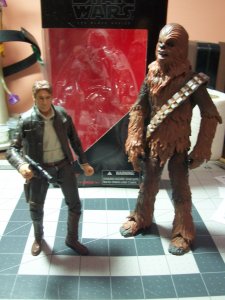
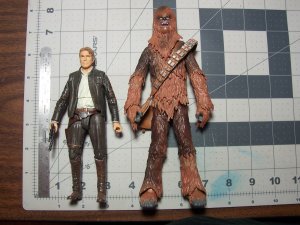
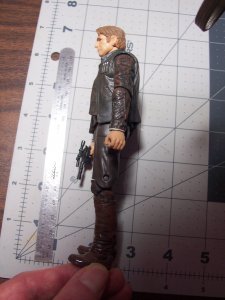
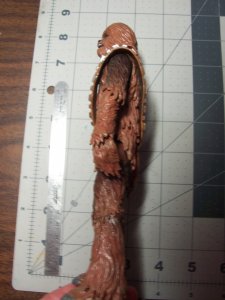

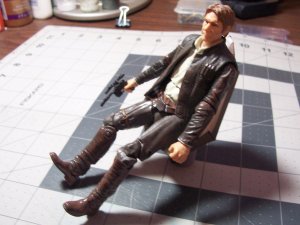
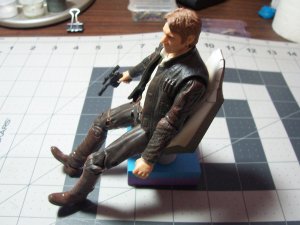
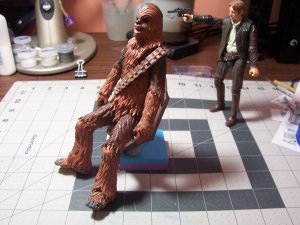
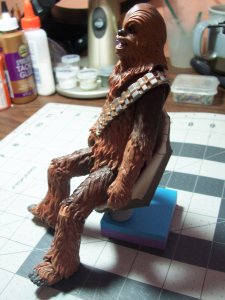
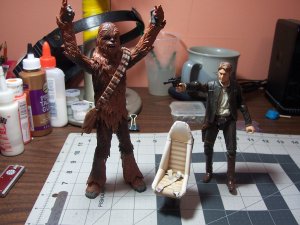
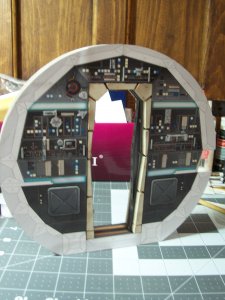
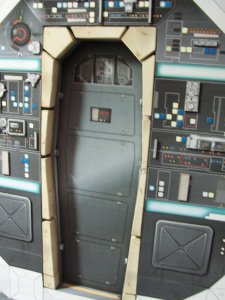
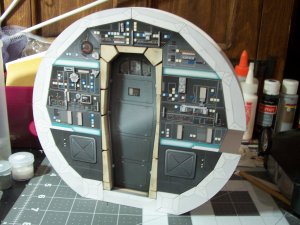
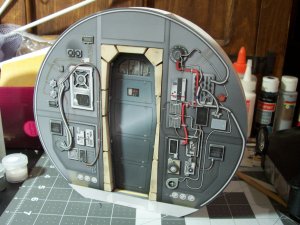
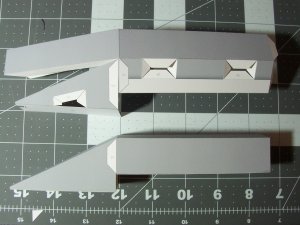
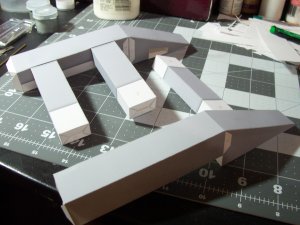
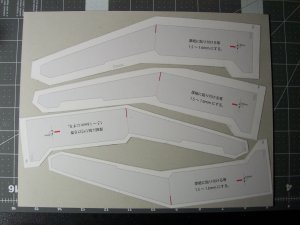
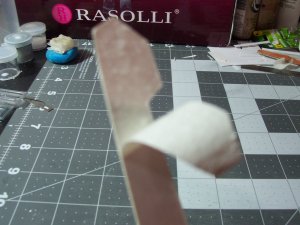
 Hey, I got to test out my new digital micrometer too! Claphands
Hey, I got to test out my new digital micrometer too! Claphands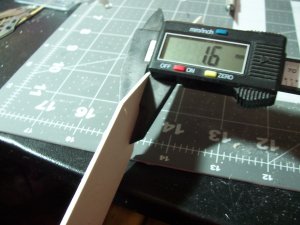
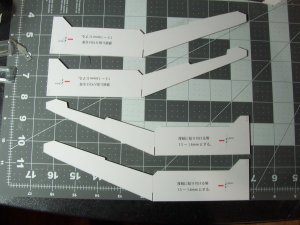
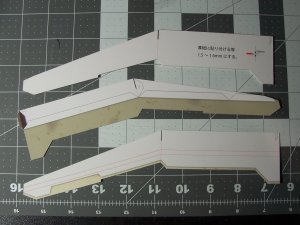
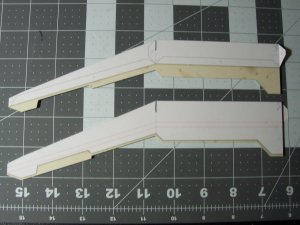
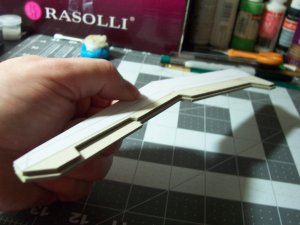
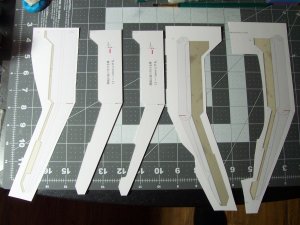
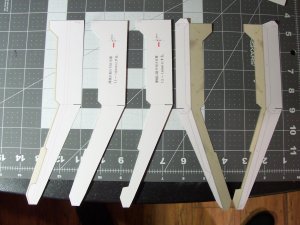
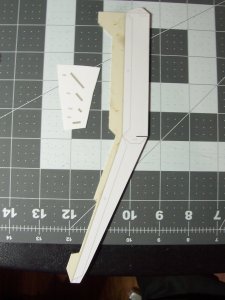
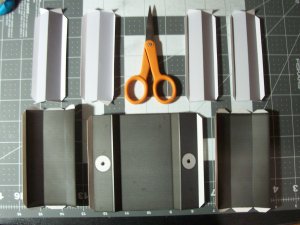
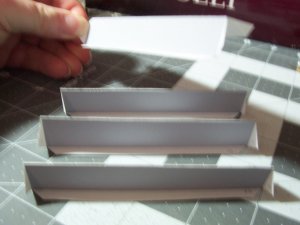
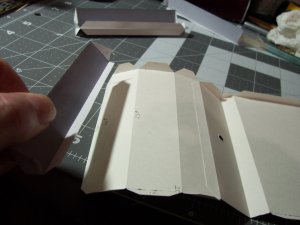
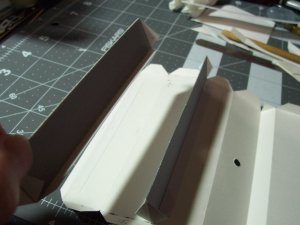
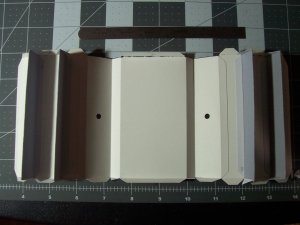
 .
.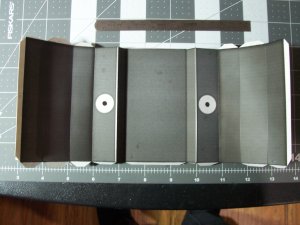
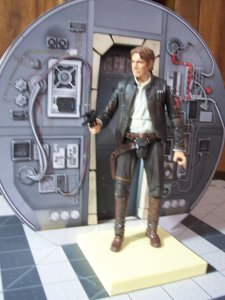
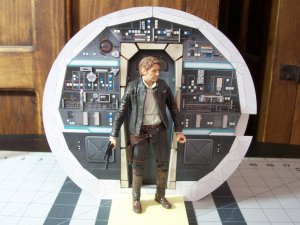
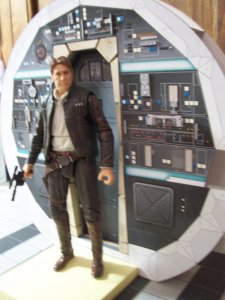
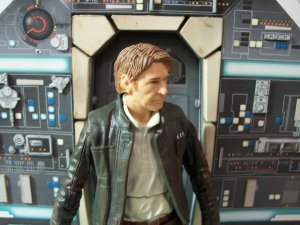
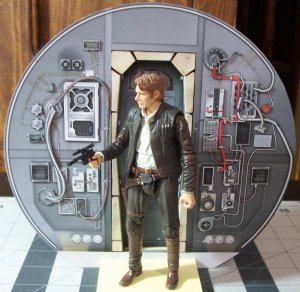
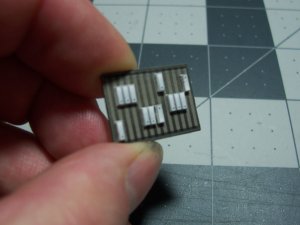
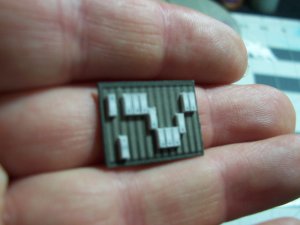
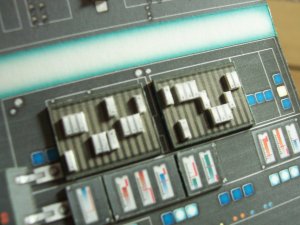
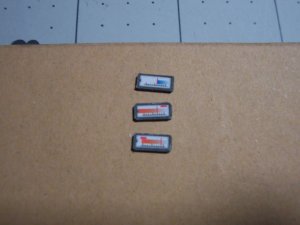
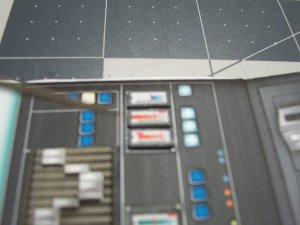
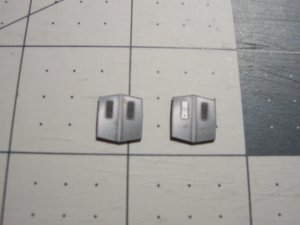
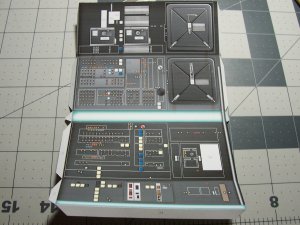
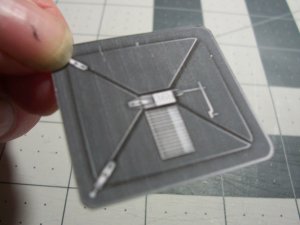
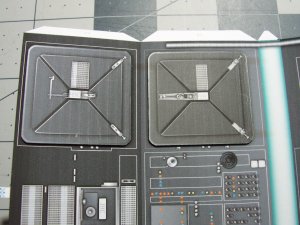
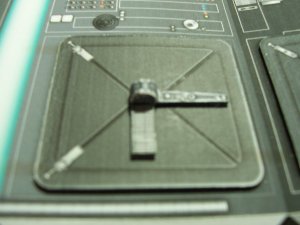
 .
.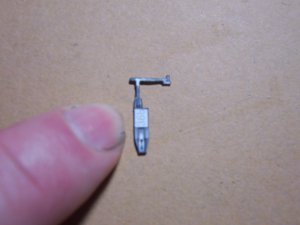
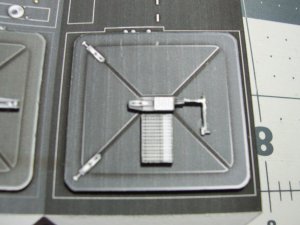
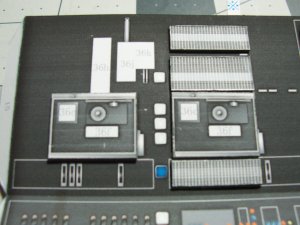
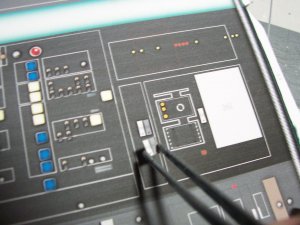
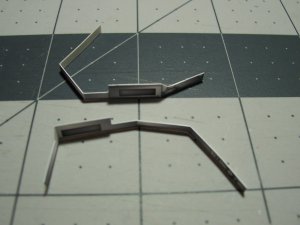
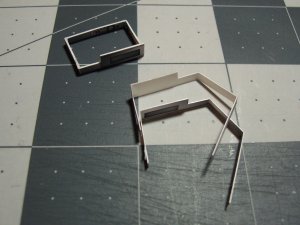
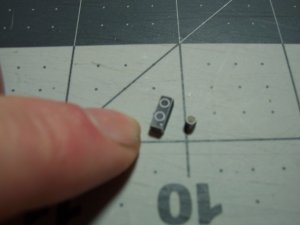
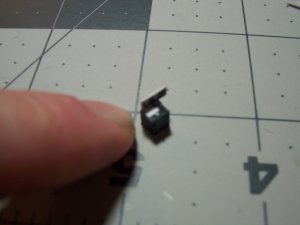
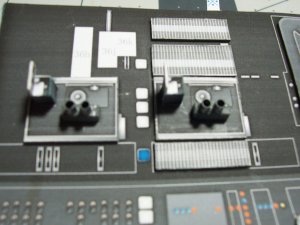
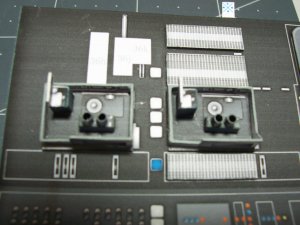
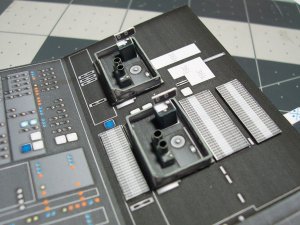
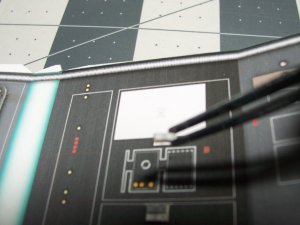
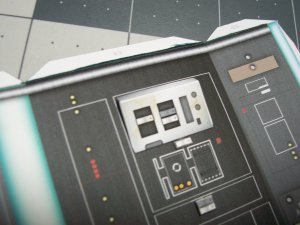
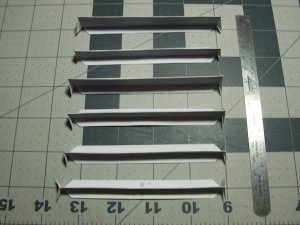
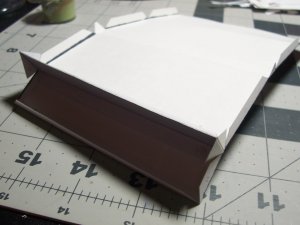
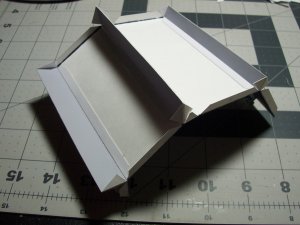
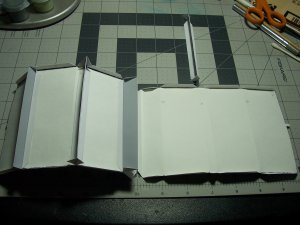
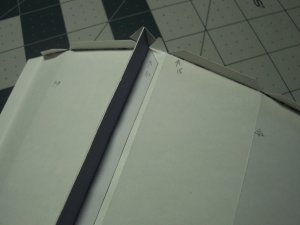
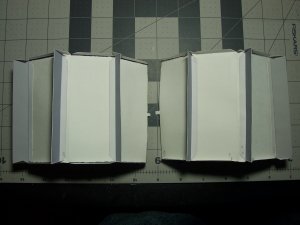
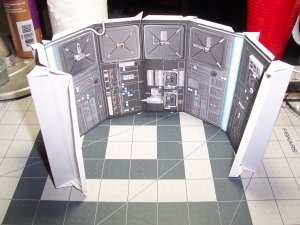
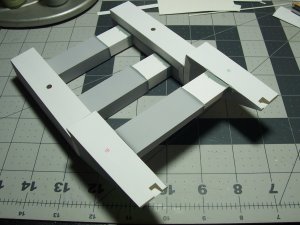
 .
.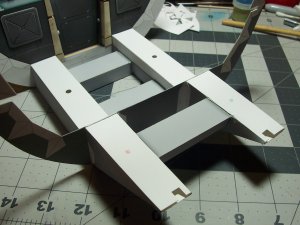
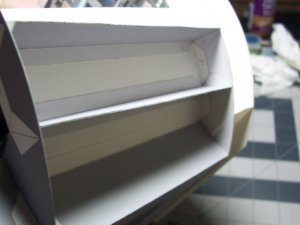
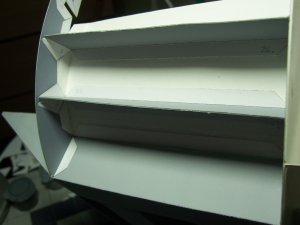
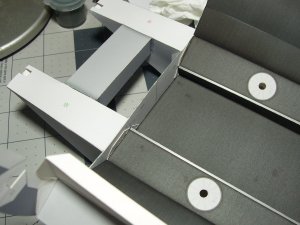
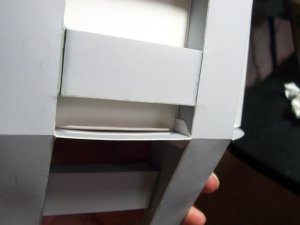
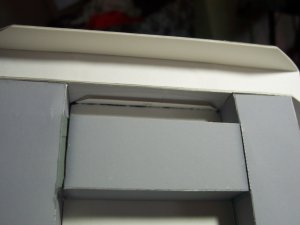
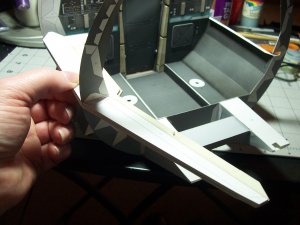
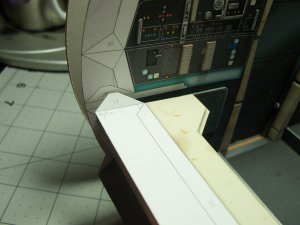
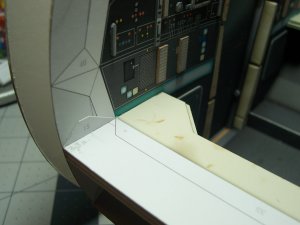
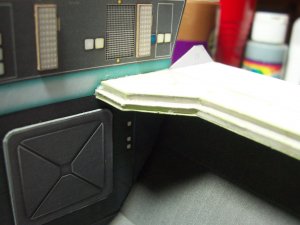
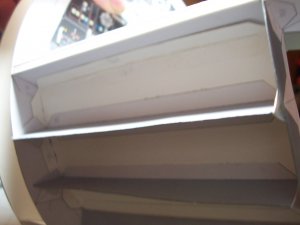
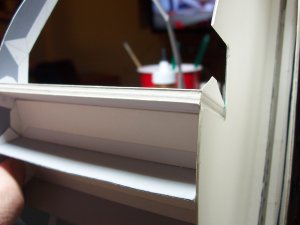
 . Hey, I bought a new box of paper clips! I might as well use 'em.
. Hey, I bought a new box of paper clips! I might as well use 'em.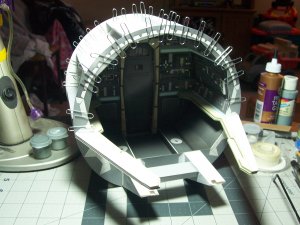
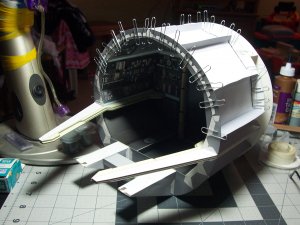
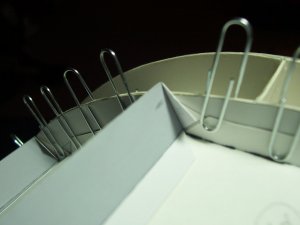
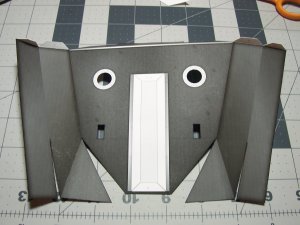
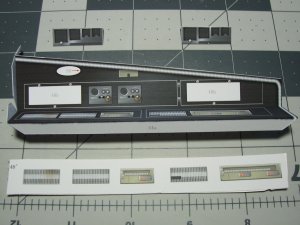
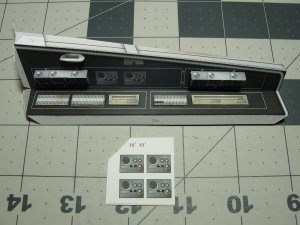
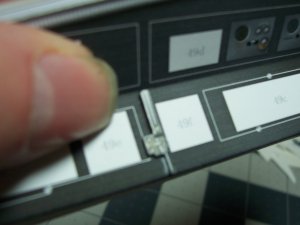
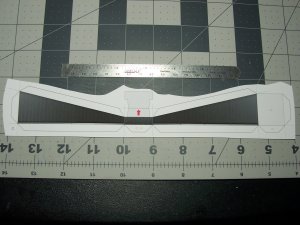
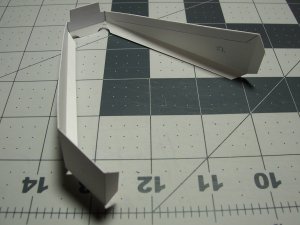
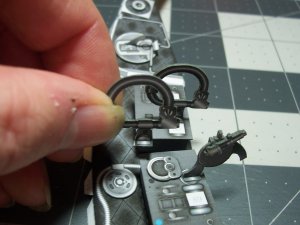
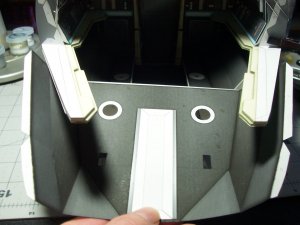
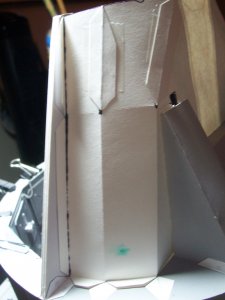
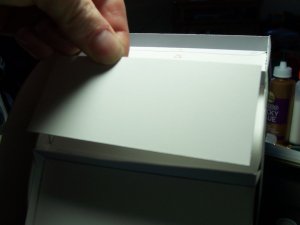
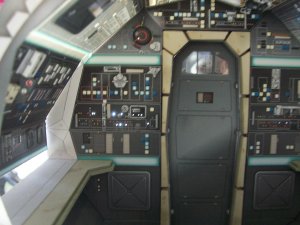
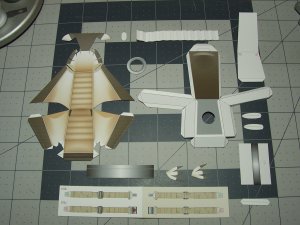
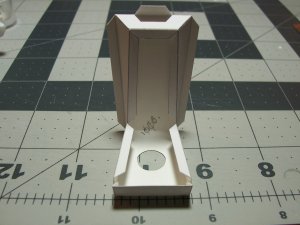
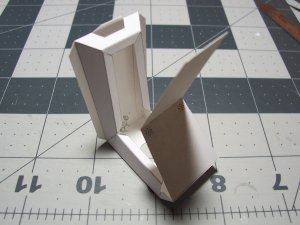
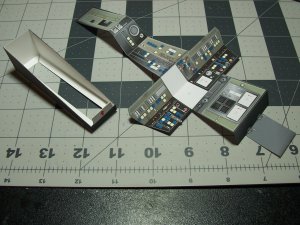
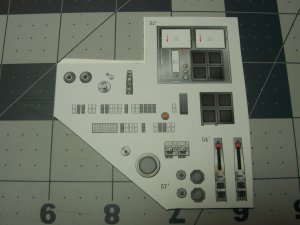
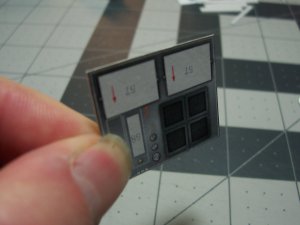
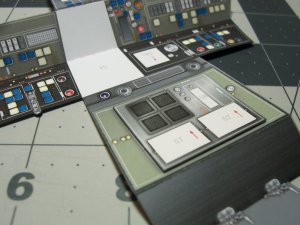
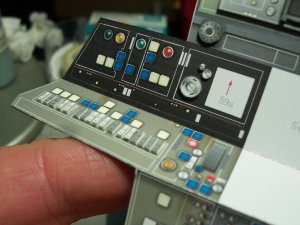
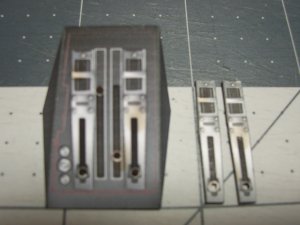
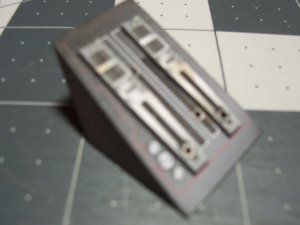
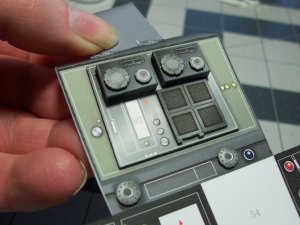
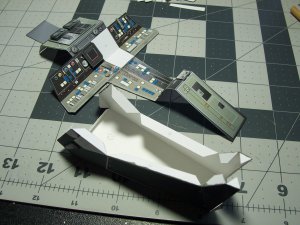
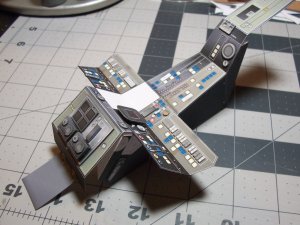
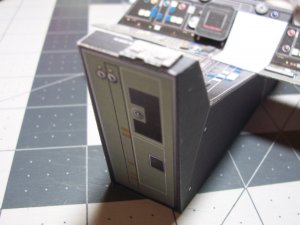
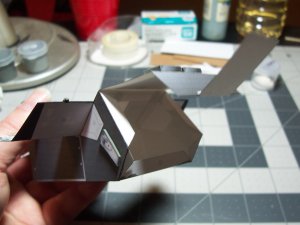
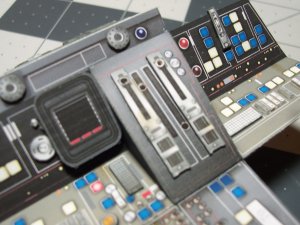


 . It wouldn't be a case of course just doubling the size of the model as a quick fix as that would make it way too big overall. It's gonna take some effort to make the combination with Hasbro figures work. I think that the model as it is from UHU02 is more like 1/12.75 scale.and some of the areas inside are 1/13 scale or thereabouts. The Hasbro characters are also pretty darn heavyweights too! The model would be easily crushed on the sides when it was lifted without substantial strengthening to the outer shell, flooring, seats, stand, and so on. Yeah, if anyone is thinking of buying these Hasbro Black Series characters to decorate this model in its original form, don't waste your money... and these figures are expensive and difficult to get as they are collectors items generally! If you wanted to go the whole hog, and add Princess Leia, C3-PO, and R2-D2, to the mix then WOW!! That would be REALLY heavy! There are also some 3.75" figures from Hasbro out there but the detail is not good, and they of course are too small
. It wouldn't be a case of course just doubling the size of the model as a quick fix as that would make it way too big overall. It's gonna take some effort to make the combination with Hasbro figures work. I think that the model as it is from UHU02 is more like 1/12.75 scale.and some of the areas inside are 1/13 scale or thereabouts. The Hasbro characters are also pretty darn heavyweights too! The model would be easily crushed on the sides when it was lifted without substantial strengthening to the outer shell, flooring, seats, stand, and so on. Yeah, if anyone is thinking of buying these Hasbro Black Series characters to decorate this model in its original form, don't waste your money... and these figures are expensive and difficult to get as they are collectors items generally! If you wanted to go the whole hog, and add Princess Leia, C3-PO, and R2-D2, to the mix then WOW!! That would be REALLY heavy! There are also some 3.75" figures from Hasbro out there but the detail is not good, and they of course are too small 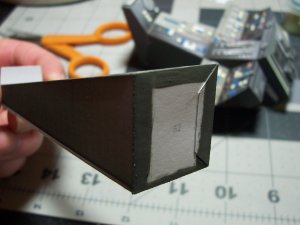
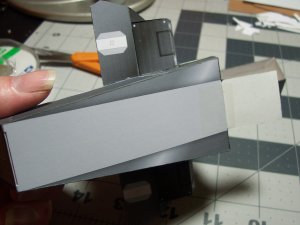
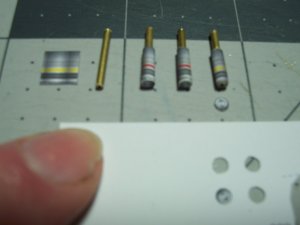
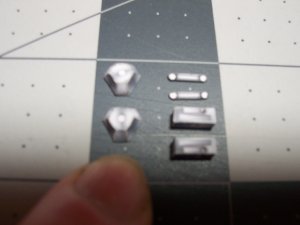
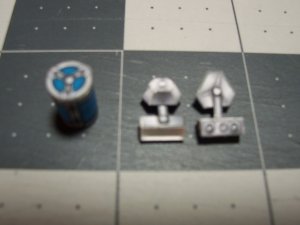
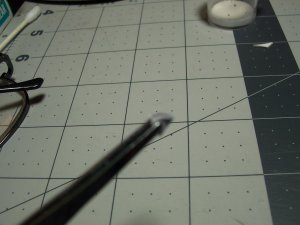
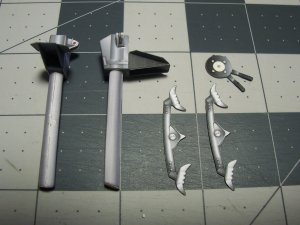
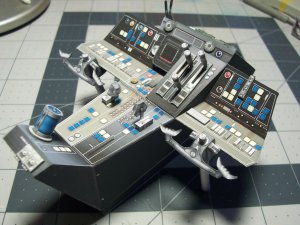
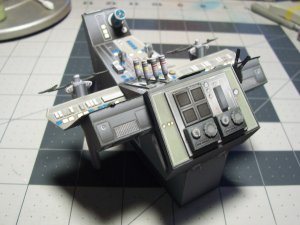
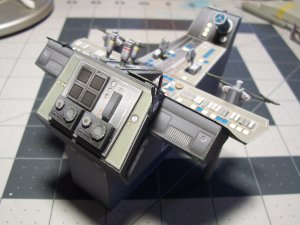
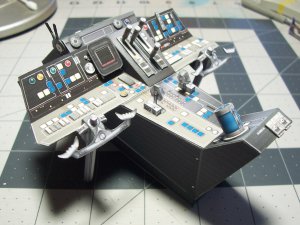
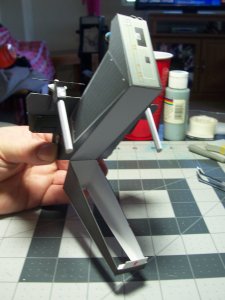
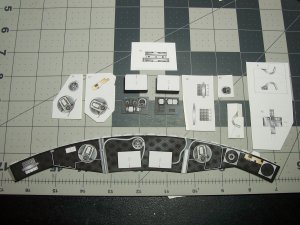
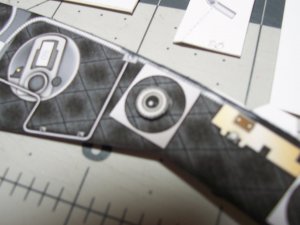

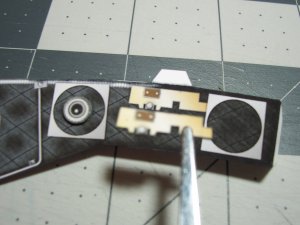
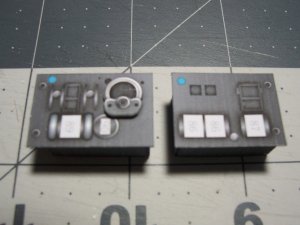
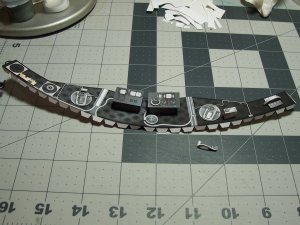
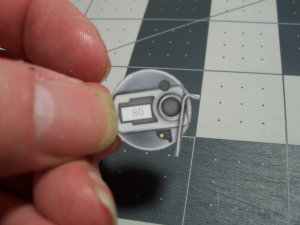
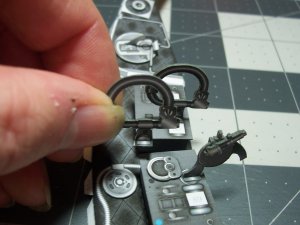
 which can really suck! I used the colors of the lights that UHU02 had assigned inside as they seem pretty accurate to me. It's interesting that there seems not to be any green lights? But that also seems to be the case on the actual M. Falcon.
which can really suck! I used the colors of the lights that UHU02 had assigned inside as they seem pretty accurate to me. It's interesting that there seems not to be any green lights? But that also seems to be the case on the actual M. Falcon.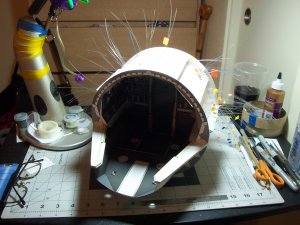
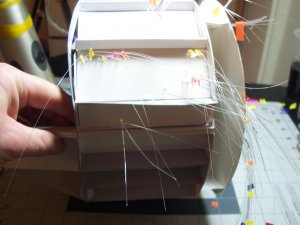
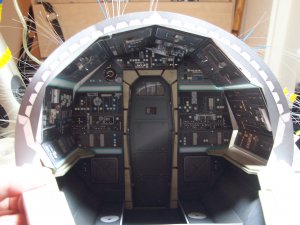
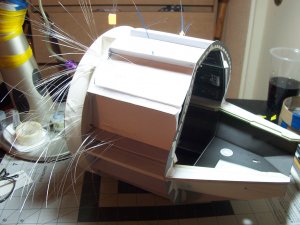
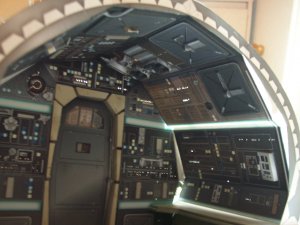
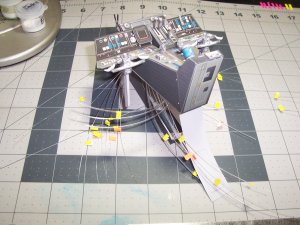
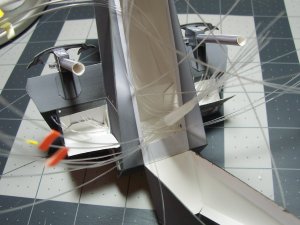
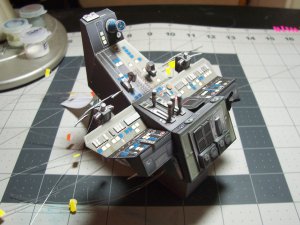
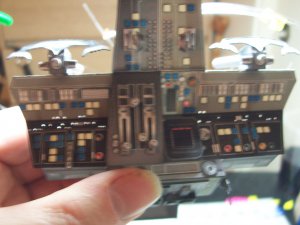
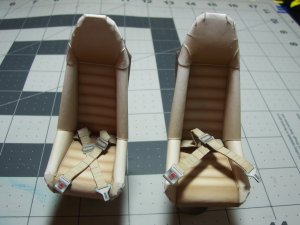
 .
.